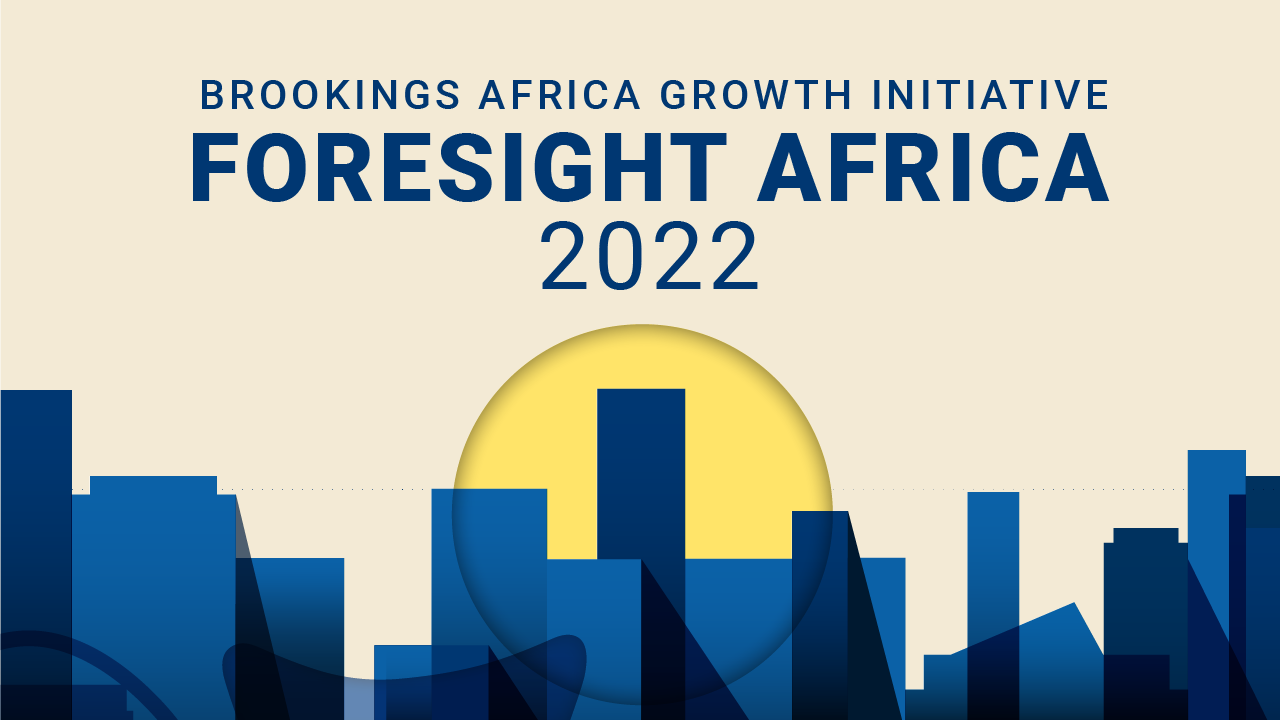Chapter
06
Africa’s external relations:
Reinventing and pursuing new partnerships
The tips of the butterfly: Linking East Asia and Africa
In the late 1990s, South Africa’s then-Trade and Industry Minister Alec Erwin likened the country’s trade strategy to a “butterfly,” according to which the thorax ran north-south to Europe and North America, while the “wings” oriented west-east were to link Africa with Latin America and Asia.
Erwin’s concept promised much then, as now, for a diversification effort, but so far has delivered less.
Still, there is much to gain from closer regional ties, in at least two respects.
The first of these is underscored by the growth and nature of economic relations. While trade relations between Africa and Asia have burgeoned, they remain lopsided; Africa is primarily a source of raw commodities, Asia an exporter of finished products. This result speaks to the relative development and diversification experience of the two regions over the last 60 years.
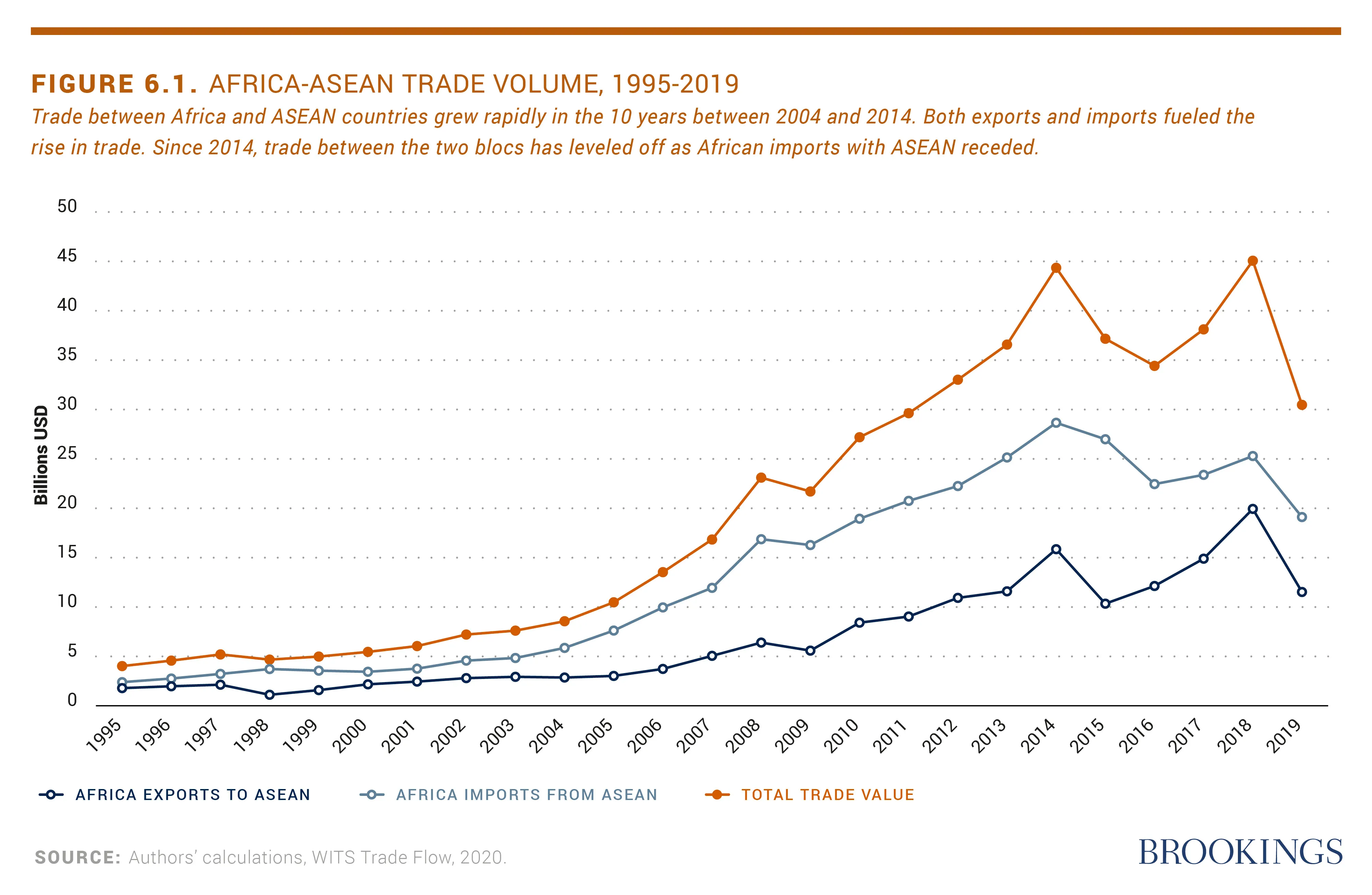
Moreover, the trend also hints at the second benefit of closer regional ties: Africa does not have to reinvent the development wheel in learning from Asia’s experience.
That more than 1 billion people have been lifted worldwide out of extreme poverty since 1990s is largely due to developments in East Asia—and in China in particular.
The Asia story has lessons—both good and bad—to share
Not so long ago, many Asian countries found themselves under circumstances very similar to much of Africa today: high levels of poverty, commodity dependent, political and social instability, and with few prospects of employment for burgeoning urban populations.
The transformation started with Japan after World War II, when it redirected its industrial prowess towards consumer manufacturing rather than imperialist ambition. Then followed the “Asian Tigers”, as South Korea similarly transformed itself from the debris of the Korean War. Between 1962 and 1989, the Taiwanese economy grew at nearly 10 percent each year. The same happened in Singapore between 1967 and 1993. And so followed others. Now, the 620 million-person, 10-country ASEAN (Association of South East Asian Nations) grouping1 has seen its average Human Development Indicator improve from 0.543 to 0.719 between 1990 and 2018, reflecting the region’s impressive improvements in both the expectancy and quality of life.
Then along came China. The sheer scale of its population coupled with an average of nearly 10 percent annual growth has been responsible for three-quarters of the global poverty alleviation effect by lifting 680 million people out of misery, reducing its extreme-poverty rate from 84 percent to just 10 percent in 33 years starting from 1980.
As a consequence, over half of the world’s poorest now live in sub-Saharan Africa.
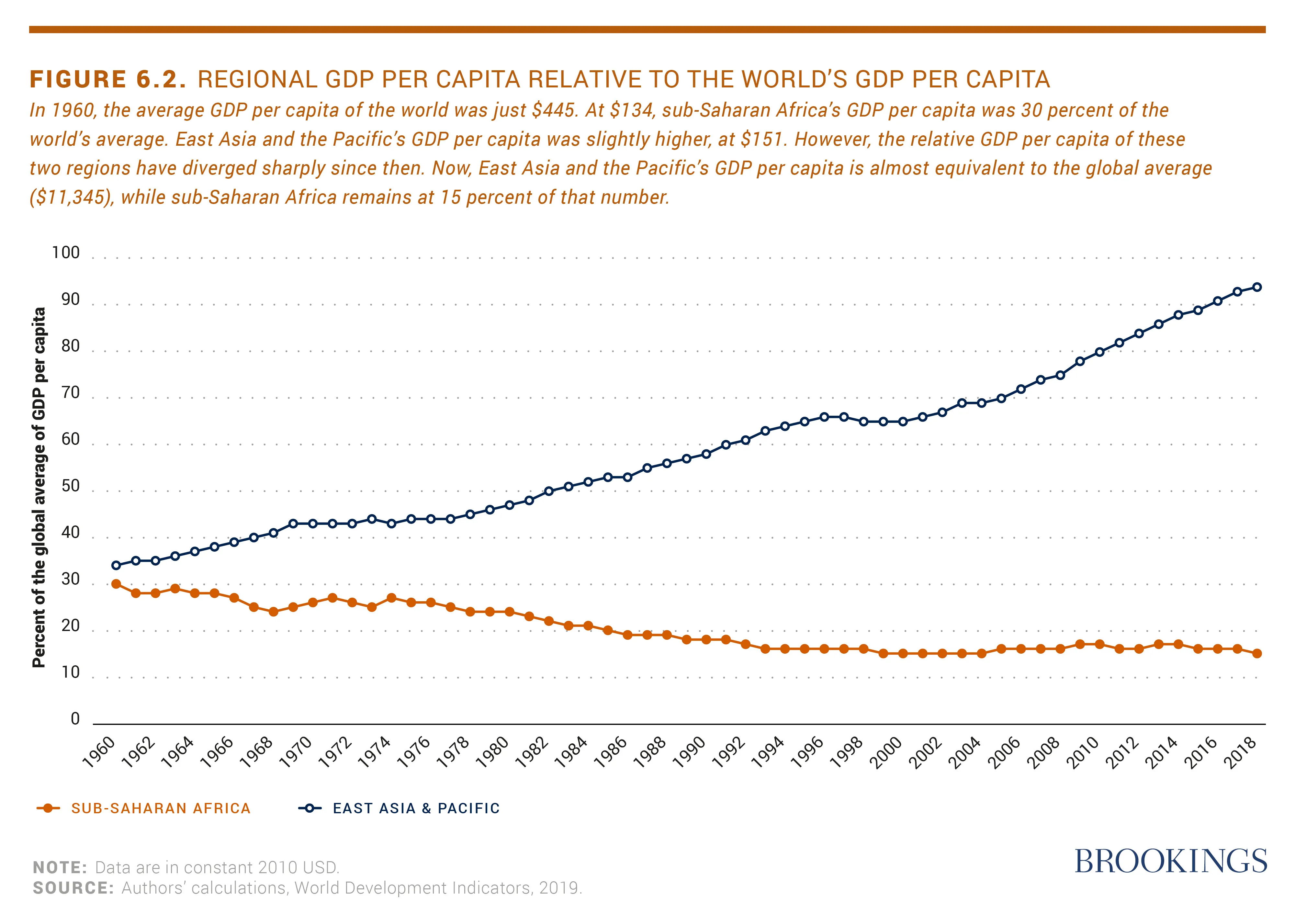
The importance of learning from the example of others, and looking forward, not backwards, are two of the central lessons from East Asia’s development revolution. There are others: The premium of good leadership, rolling out the “basics” from agriculture to infrastructure, and the central importance of openness (summarized in Figure 6.3).
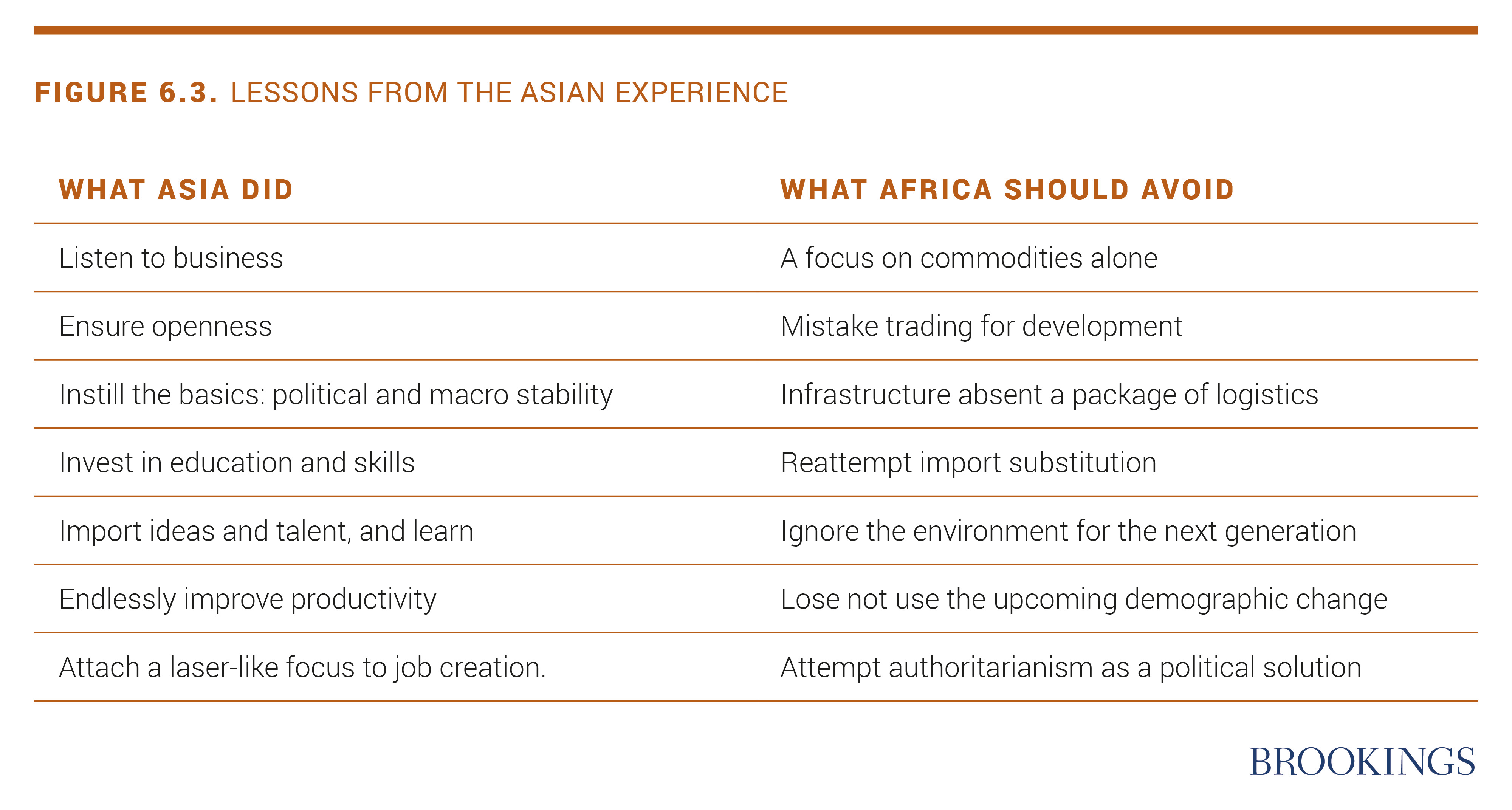
Despite the obvious differences, Africa and Asia share many similarities: In fact, East Asia seemed to have very few advantages over Africa at the point of decolonization.
Traditional East Asian societies were often characterized by ethnic disunity, frail institutions, limited governance outside of the capital, weak democracy, subsistence agriculture, fragmentary external trade linkages, and acute social stratification —conditions prevalent in many African states. Both share a history of commodity and colonial exploitation, where the conquerors were sharply divided from the conquered by race, though there was a tendency on the part of the colonizers to favor some local groups over others.
East Asia has prospered in spite of this legacy. While most East Asian countries had to accept a complex ethnic make-up as a result of colonial involvement—as did Africa—this situation, in most cases, has not resulted in endemic instability. East Asia, too, has had to cope with weak human capital, yet its states have, by and large, quickly turned their people into an asset through investment in education. While Africa’s institutional capacity is cited as a structural developmental impediment, some countries in Southeast Asia have grown economically with institutions at independence far worse resourced than those in African countries. Few African countries, after all, can claim the bitter cost and damage wrought by the wars in Vietnam, Laos, and Cambodia.
“Overall, the most notable differentiating factor between the regions of Africa and East Asia is in the relationship between government and the private sector.”
Whereas some Asian countries enjoyed especially large aid flows (South Korea and Taiwan, for example) and continue to do so (such as Vietnam), they did not allow themselves to become dependent on this single source of income. Most Asian countries have put aid to good use, in part because of firmer local ownership of projects.
Similarly, a more conducive policy environment also helps to explain why some East Asian countries have used their significant natural resource endowments to their advantage (Vietnam, again, or Malaysia, for instance) without becoming overly locked into commodity production and, hence, vulnerable to price fluctuations.
The regions share a parallel on corruption. Africa’s average ranking in 2018, for instance, on Transparency International’s Corruption Perceptions Index is 32/100; ASEAN scores 42/100. (The world average is 43, with higher scores indicating better governance.)
The difference in development results between the regions does not originate either in political systems, even though for some, East Asia’s development success has been used to justify authoritarianism, given that the region’s economies have managed high economic growth rates without full political rights.
Rather, a lot of East Asia’s success has been down to leadership, policy style, and governance substance.
Key aspects of Asia’s relative economic success—including high spending on education, bureaucratic responsiveness, attractive policy for business investment, low wages, high productivity, investment in infrastructure, raised agriculture outputs as an initial spur to growth, and an overwhelming focus on competitiveness—are routinely overlooked by advocates for autocracies.
“While no country or region is a complete analogue to any other, the East Asian experience illustrates the astonishing results a determined government can deliver. Africa’s leaders will have to adopt a sense of urgency equal to the task if they are to ensure that their countries prosper from huge demographic changes underway.”
Those East Asian states that attempted centrally planned economic development were a catastrophe, just as the model has, too, proven a disaster in the African countries pursuing this path. Asian countries—e.g., China, Cambodia, Vietnam—that moved away from this model immediately prospered.
Overall, the most notable differentiating factor between the regions of Africa and East Asia is in the relationship between government and the private sector. Investment growth that diversifies the economies and creates jobs, notably in industry, in Africa has remained comparatively very low.
The extent of economic openness, not only to trade and capital but also technology and the ideas that go with it has been key in these success stories. The figures are stark. Whereas its population share is 18 percent of the global sum of 7.9 billion people, Africa today receives an average of around 3 percent of global flows of foreign direct investment (FDI). The continent’s GDP amounts to just under 2.7 percent of the worldwide total—a share per capita that has fallen by 50 percent over the last 60 years.
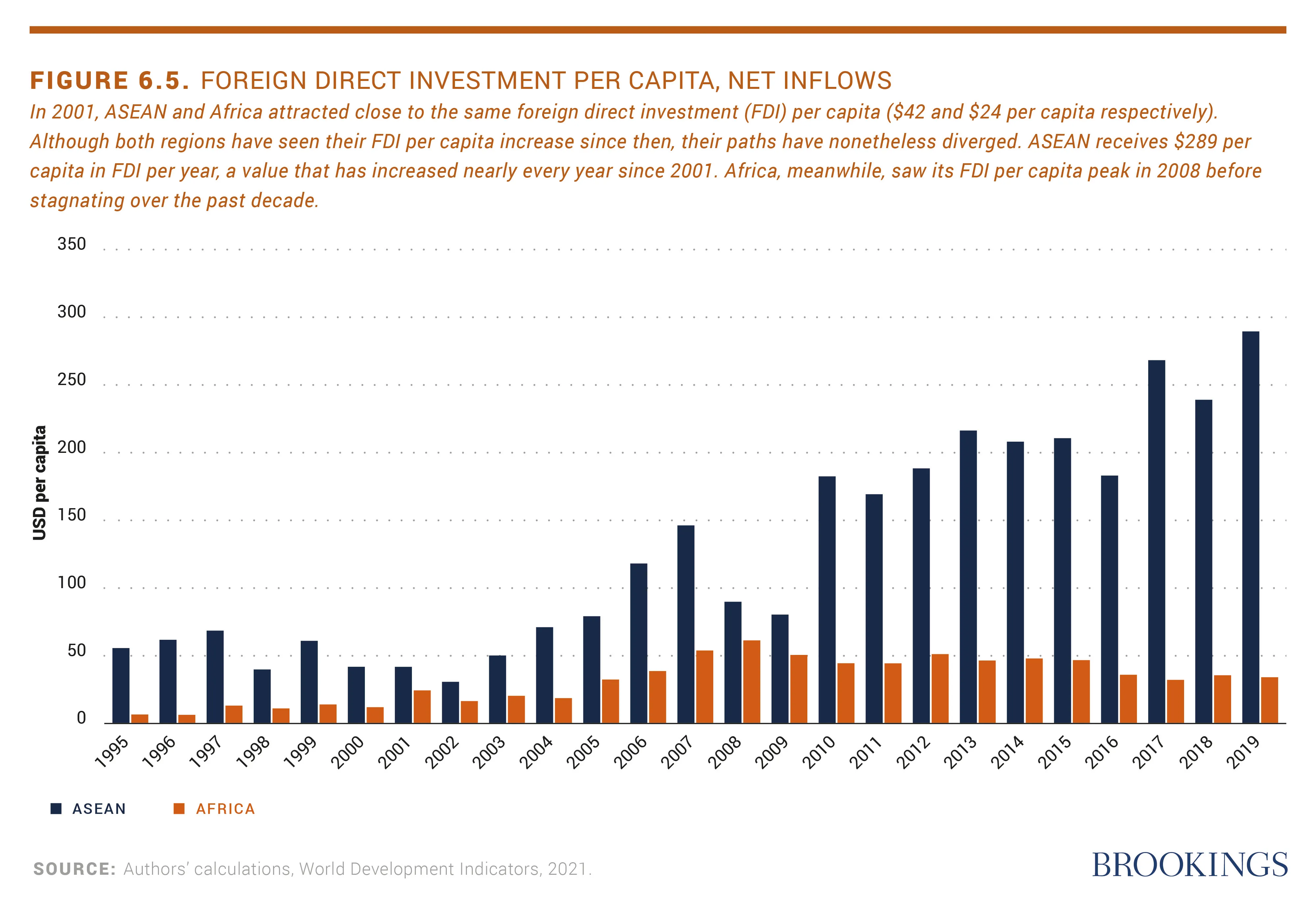
Japan’s industrialization was, for example, based on three key elements: 1) a strong private sector supported by an education system providing apposite skills; 2) a supportive state; and 3) a willingness to attract and absorb outside ideas, technology, skills, and capital.
Simply being receptive to outside thinking was not enough. The government deliberately sought lessons and imported technical and commercial partners by sending government officials abroad to network and study. In pre-World War II Japan, as much as two percent of the government’s budget was dedicated to the advice of foreign corporate and industrial specialists.
“Africa’s development answers lie in providing the space for the private sector to flourish and to establish the regulatory conditions in which it can grow to formalize.”
Despite the caricature of a closed society to outsiders, Japan actively diffused and internalized the technologies and practices foreigners left behind. Its spinning technology leaned on British technology; electrical machinery to a relationship with GE, AEG, and Siemens; the telegraph to French involvement; and shipbuilding to British and U.S. firms. The steel industry was based around collaboration between the state-owned Yamata Iron Works and Germany’s Gutehoffnungshutte and, later, between the Mitsui zaibatsu and Britain’s Armstrong and Vickers. Japan likewise borrowed car and motorcycle expertise: Isuzu from Wolseley Motors and Nissan from Austin, Toyota from U.S. carmakers, and Mitsubishi from Fiat. After the war, Honda and Suzuki, among others, were willing to study European models and reverse-engineer and improve on their products.
One contributing factor of Japan’s early success was the presence of a corporatist state, although sometimes inefficiently so. In the 1950s, the role of the Ministry of International Trade and Industry (MITI, which transformed to the Ministry of Economy, Trade and Industry–METI–in 2001), was to target key sectors, particularly textiles, through foreign exchange allocation. Their focus over the following decade shifted to promoting domestic technology through research and development subsidies. In the 1970s, it promoted alternative energy sources (notably nuclear) in the wake of the oil shock, along with deregulation. Now its role is mainly as a “troubleshooter” within government ministries—or “troublemaker,” as one former official put it.
Still, Japan’s economic transition remains pertinent to Africa.
One priority for Japan’s development spending in Africa is on kaizen—the “continuous improvement” of the workforce. To this end, a Kaizen Institute was established in Ethiopia in 2013, while the Japan International Co-operation Agency (JICA) continues to fund seminars, experts, training, and other skills improvement initiatives in Africa as part of its $1 billion in annual African aid. This engagement has accelerated and deepened as Japan has felt marginalized by China’s African ambitions, and Tokyo has learned lessons from the effectiveness (or not) of its aid.
“Other African countries, such as Botswana and Morocco, show how it is possible to run state-owned entities along efficient, commercial lines and, in so doing—coupled with streamlined regulatory and tax processes reducing the cost and wear of everyday frictions—provide the requisite foundation for external investors.”
Such a focus on skills and education is not going to be enough to replicate, or even adapt, the Japanese model. At its core, it will require understanding the nature of business and its needs to seeing the customer—whether a business or an individual—as being at the center of government’s actions.
Learning to trust the private sector
While no country or region is a complete analogue to any other, the East Asian experience illustrates the astonishing results a determined government can deliver. Africa’s leaders will have to adopt a sense of urgency equal to the task if they are to ensure that their countries prosper from huge demographic changes underway.
Africa has sought to address these deficiencies in part through increasing sovereign debt, much of it for Chinese-supplied infrastructure. This strategy carries with it other challenges, not least the management of this stock for future generations, and the transparency and corruption surrounding such deals.
Africa’s development answers lie in providing the space for the private sector to flourish and to establish the regulatory conditions in which it can grow to formalize. There are an increasing number of stories of sustained entrepreneurial success across Africa. Too often these stories are, however, in spite of often-predatory government interference rather than because of adroit policy. African business is supremely practiced at circumventing government obstacles, rather than relying on government to catalyze and nurture good ideas and must routinely find workarounds to inefficient infrastructure. The continent gets ahead now largely because of the power of entrepreneurship and not the efficiency of governments.
“The critical aspect in Africa’s developing relationship with Southeast Asia is to find the means to build stronger ties, a relationship that goes beyond a burgeoning loan book for African infrastructure, to a regime that expedites freer trade and seeks fresh investment in African industrial and services sectors.”
Take South Africa’s roll-out of COVID-19 vaccines: With the private sector leading, after a slow start (when government tried to control the process), the country has now developed a system with the capacity to vaccinate up to 0.7 percent of the 60 million population each day. Likewise, the country possesses world-class banking and insurance services, and its private mining sector has long been acknowledged as a global leader. However, the sinews that keep these economic muscles flexing, are chronically dysfunctional. South Africa’s state-run ports languish at the bottom of global, and even African, efficiency rankings. Its state electricity systems, which on paper make up more than half of the continent’s generating capacity, are beset by operational problems and, thus, consumers by frequent outages. Its railways, once the best in Africa, are today a rickety facsimile of a proud history and are proving a major constraint to exports of raw materials.
And, yet, other African countries, such as Botswana and Morocco, show how it is possible to run state-owned entities along efficient, commercial lines and, in so doing—coupled with streamlined regulatory and tax processes reducing the cost and wear of everyday frictions—provide the requisite foundation for external investors. The power of the private sector, formal and informal, can be seen in a multitude of ways, from tourism to retail. As Asia has shown, state ownership is not the problem; it’s how these entities are run. Whether they operate along commercial principles or as agents for the redistribution of political largesse is the difference between success and failure.
*
In May 2000, The Economist led with the headline, “The Hopeless Continent.” A decade later it led with the heading, “Africa Rising.” Yet Africa is neither a continent of chronic despair nor unchecked optimism. The key lesson from Asia’s development choices and progress is to focus on dealing with the facts on the ground as they are.
Implicit in the difference in developmental performance between the two regions is, however, opportunity.
The critical aspect in Africa’s developing relationship with Southeast Asia is to find the means to build stronger ties, a relationship that goes beyond a burgeoning loan book for African infrastructure, to a regime that expedites freer trade and seeks fresh investment in African industrial and services sectors. For their part, Asian countries should seek a more equitable and thus sustainable relationship with Africa; and for theirs, African governments should seek to put business, not government, at the center of economic development.
Viewpoints

The future of Russia-Africa relations
Joseph Siegle delves into the complex approach Russia is taking toward Africa, noting that the “partnerships” that Russia seeks in Africa are elite-based, not state-based.

UK-Africa relations: The need for an urgent reset
Sara Pantuliano and Max Mendez-Parra explain how both the U.K. and Africa can benefit from reversing the long-term trend of a slow decline in their relationship.

Deepening Gulf engagement with sub-Saharan Africa
Tarik M. Yousef outlines prospects for deeper economic relations between Africa and the Gulf Cooperation Council countries.

The future of India-Africa relations: Opportunities abound
Stephen N. Karingi and Laura N. Naliaka discuss the future of a deepened India-Africa economic and diplomatic relationship.
